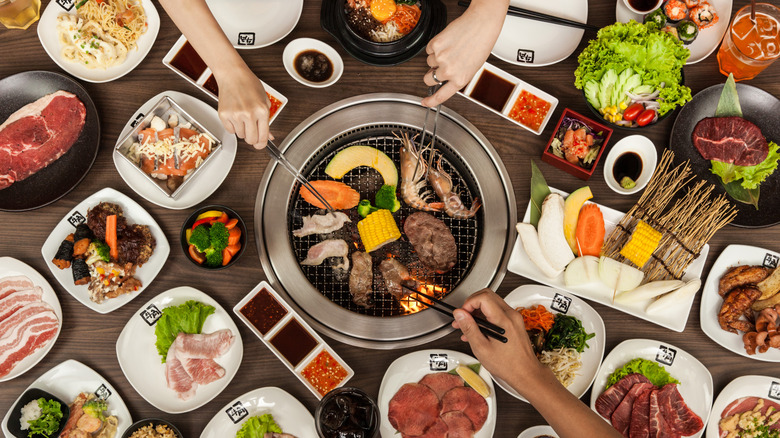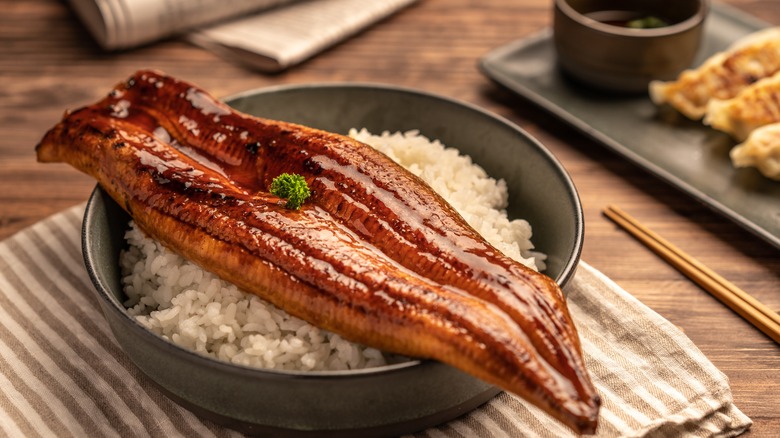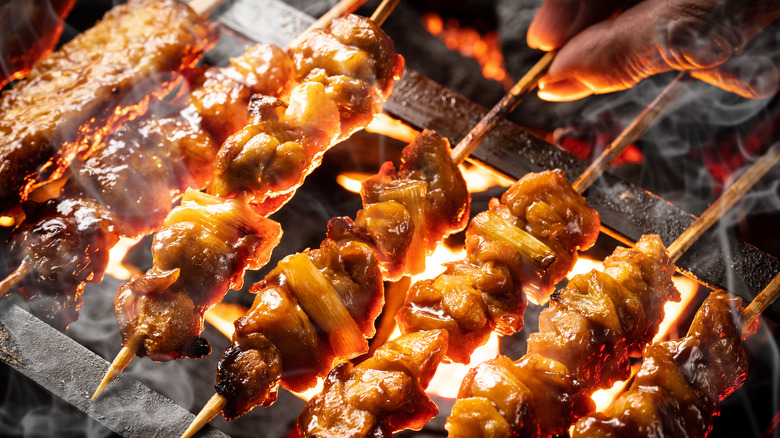What Exactly Makes A Hibachi Grill Unique?
Hibachi seems to be the grill of choice for contestants on cooking shows for good reason. There is something mesmerizing about watching someone deftly cook a thin slice of marinated beef strip on that tiny charcoal grill. It briefly resembles the cooking style for a range of Asian-style street food, from Malaysian chicken satay to Vietnamese grilled bananas.
The hibachi grill does indeed have its roots in Asia. Specifically, it originated in Japan during the Heian period from 794 to 1185 A.D., where it started as a personal heating device. It later morphed into the compact, portable, box-shaped ceramic or clay cooking unit with a cast iron grill that we are familiar with.
With this, the hibachi grill's unique feature is its design, which allows us to cook in high heat. Hibachi grills use direct heat from charcoal, creating an intense and focused source of heat — up to 392 degrees Fahrenheit – for quick searing. There is also a very short distance from the source of heat to the food, so the food usually has a distinct char and smoky flavor while still remaining juicy. In contrast, barbecue grills, as seen in backyards, typically use indirect heat through gas or charcoal, often with a lid to create a convection effect.
Cook thinly sliced food on the hibachi grill
The hibachi grill uses charcoal as a heat source. This starts with using a chimney starter, which is an open-ended metal cylinder that can accommodate paper at the bottom. Light a fire under the chimney, stack the coals above it until it starts to glow and use tongs to transfer the coals to the bottom of the hibachi grill. This is slightly more finicky than using a gas barbecue grill or a griddle on a stove top, but it boosts the flavor of the food.
To be clear, the hibachi grill is not the device to cook thick, juicy cuts of steak or chicken wings, which can be time-consuming. Instead, it is best used for searing thinly sliced food or food that can be threaded onto a skewer, just like Japanese-style yakitori. With that in mind, consider cooking anything from beef strips to seafood on the hibachi. Prawns or calamari would be ideal because they only need a few minutes to cook; anything longer and it will be rubbery.
As for vegetables, choose vegetables that can be easily threaded onto a skewer, like zucchini, tomatoes and mushrooms. Although the skewers are not strictly necessary, they help prevent the vegetables from falling between the iron grates and into the fiery charcoal pit.
Hibachi grills are ideal for small spaces
Hibachi grills are small and compact enough that they can be placed on a dining table in an apartment, an outdoor table on a balcony or even on a campsite. This allows for an intimate dining experience with friends and family as people have to huddle around the grill and cook the sliced meat, fish or seafood together. The host will provide the raw or marinated ingredients, but each individual is responsible for cooking their own food.
In comparison, an outdoor BBQ grill or even the grill feature on conventional ovens only requires one designated cook, so it is not quite a communal activity. This bulky equipment remains in that one spot in the house.
The only caution about using the hibachi grill in various spots in the house is that the charcoal and smoke can set off the fire alarm. So make sure you use it somewhere where there is sufficient airflow or ventilation, as recommended by the CPSC.


